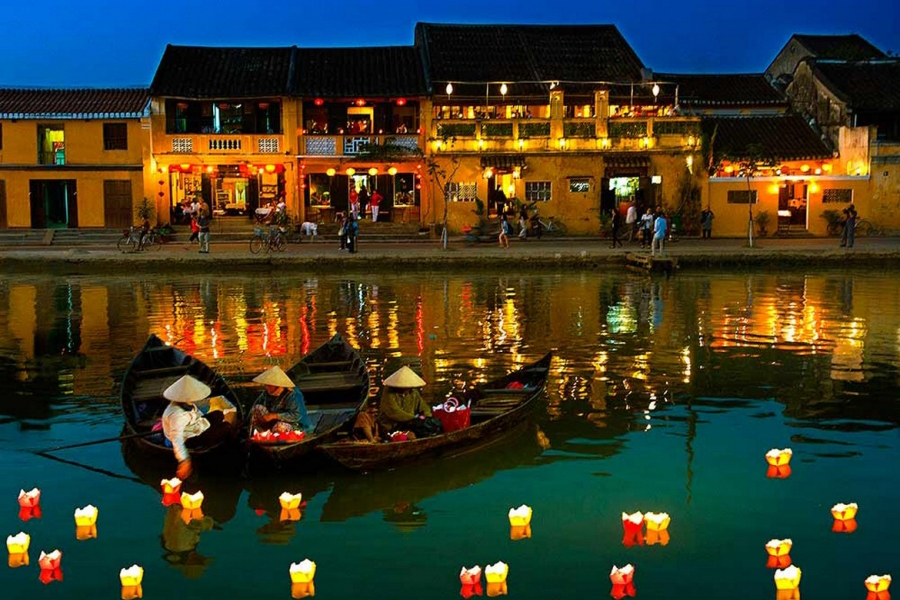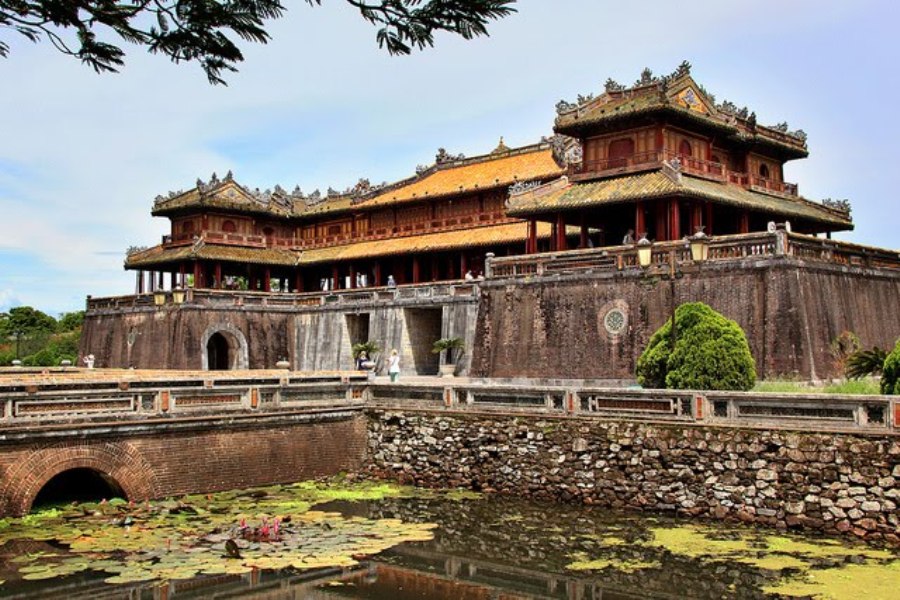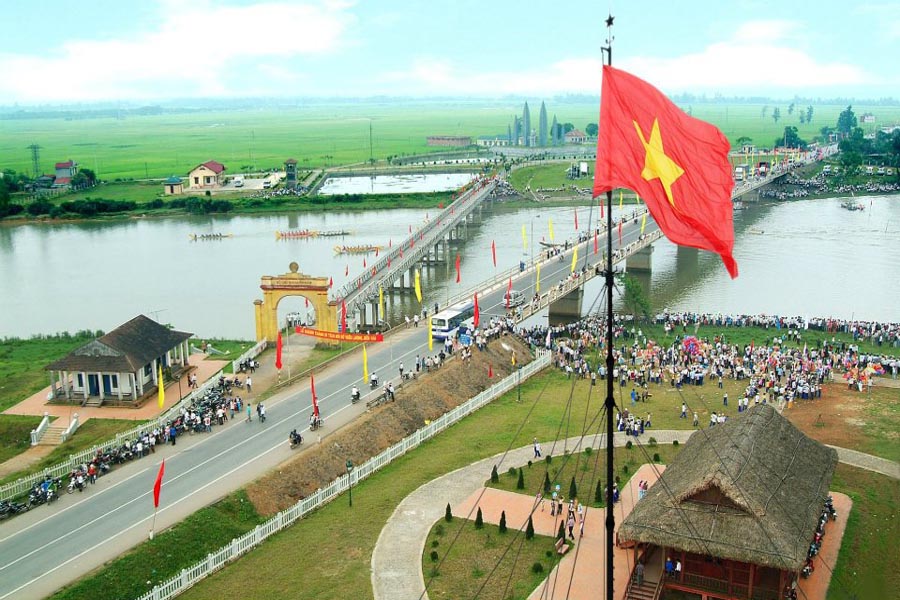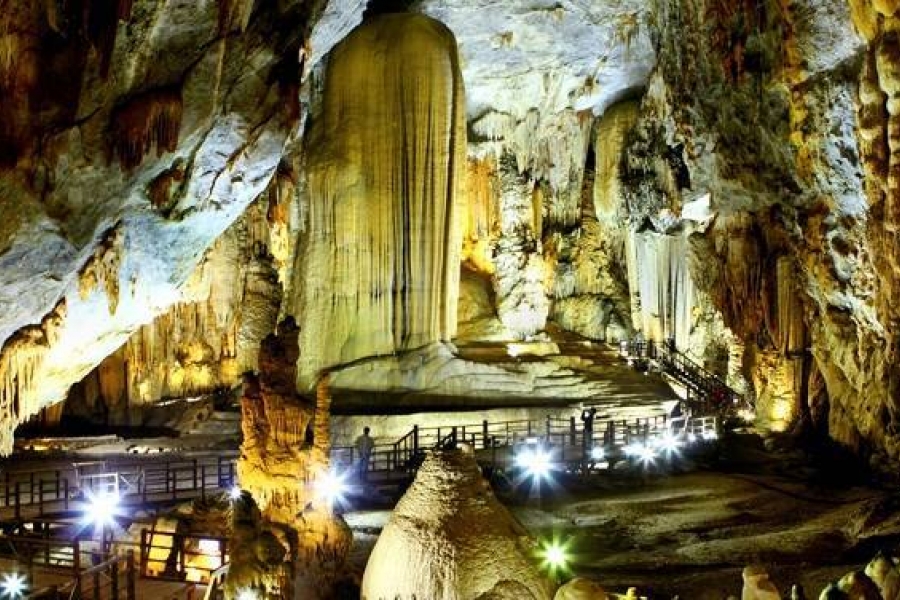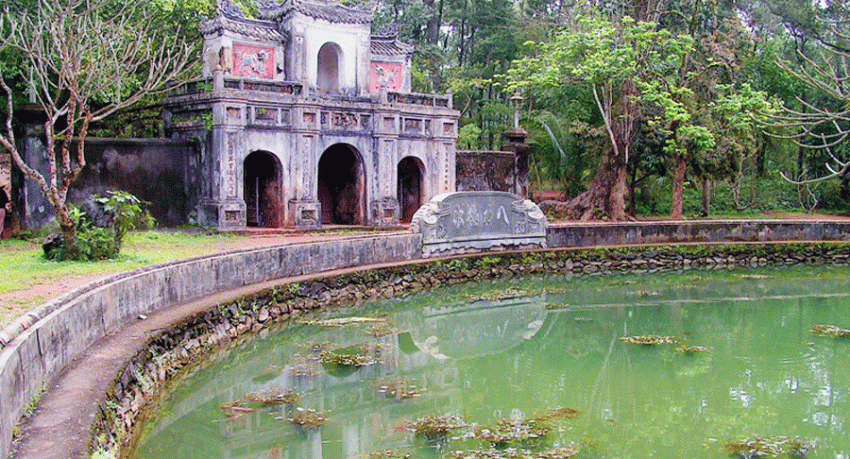In describing Tu Hieu Pagoda, The book “Dai Nam Nhat Thong Chi” published by the National Institute of history of the Nguyen Dynasty records: “The pagoda is located in Duong Xuan commune on the site of a former temple. In the third year of the regin of Emperor Thieu Tri (1834), Cung Gian Chau Phuong Nang raised money to renovate the pagoda”. because they had no offspring, the eunuchs of the imperial palace were concerned that their souls would not be worshipped after their death. Condequently, in 1848 they offered the pagoda money and land in return for having their graves tended to and their souls honored. the eunuchs also asked the Emperor to provide funds and building materials for the reconstruction and enlargement of the pagoda.
The pagoda was built in the form of the chinese character “Khau” (mouth), with the main building consisting of three rooms and two wings. The principal sanctuary is for worshiping Buddha. Behind, is a room honoring sanctuary is for the pagoda. Across a courtyard, the Quang Hieu Duong Hall houses an altar delicated to local Buddhist devotess on the right, another to the god Quan Cong in the ceter, and a third to the eunuchs on the left. Aseparate altar in this hall honars eunuch Le van Duyet, an oustanding mandarin during the regin of Emperor Gia Long. To the left of the courtyard is the living quarters for the monks (Ta Lac Thien) and to Tu Hieu right is the guesthouse (Huu a Nhat).
The entrance gate to the pagoda is a curved two – storey structure. On the second storey, a statue of the guardian spiritr Ho Phap protects the Pagoda. Inside the gate crescent-lotus pond.
The pagoda was originally called An Duong Am (Resting palce). It is said that the monk Nhat Dinh Nguyen of Giac Hoang pagoda once came here, bringing with him his aged mother. One day she fell seriously ill, and her doctor prescribed a diet of meat and fish to quicken her recovery. The monks thus went to ben Ngu market everyday to buy meat and fish. Surprised to see a supposedly vegetarian monk makingmsuch purchases, the village people began to mock and ridicule him. The mmonk took their taunts and insults stoically. When Emperor Tu Duc learned the true story, he was moved by the monk’s piety, and consequently gave the pagoda a gilt sign with the words “Sac Tu Hieu” (bestowing the name “Piety Pagoda”).
Tu Hieu pagoda lies about five kilometers southwest of Hue in Thuy Xuan commmune. To reach the pagoda, visitors should proceed down Dien Bien Phu Street to Nam Giao Esplanade, then turn right and follow the road leading to the tomb Tu Duc. beyond the tomb of Tung Thien Vuong Mien Tham and a number of stupas markingmthe tombs of high-ranking monks from Tuong Van and Dieu De pagoda, a gravel road to the right leadsto Tu Hieu, about 300 meters away.
Copyright by Phong Nha Pioneer Travel
Categories: Blog
